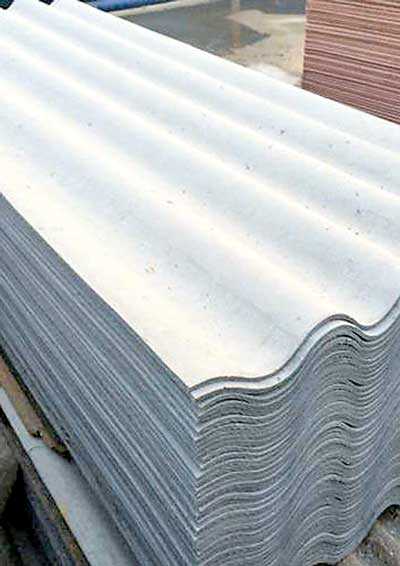Friday Apr 26, 2024
Friday Apr 26, 2024
Tuesday, 2 October 2018 00:00 - - {{hitsCtrl.values.hits}}
Fire is one of the major types of accidents that cost lives of people as well as property every year. Fires can be instigated due to natural causes (such as earthquakes, storms, bush fires, lightning) or through human intervention such as due to flaws in electrical wiring, unattended electrical appliances and unattended gas stoves. Fires caused by natural disasters cannot be predicted, thus difficult to control, however, fires caused due to accidents can be prevented or controlled to great extent. In the instance of latter, choosing the right material for construction. 
Often the two terms ‘fire-resistant’ and ‘fire-retardant’ are interchangeably used to refer to material that are not easily flammable. However, the two terms have distinct meanings. Fire resistant or incombustible material is designed to resist the burning and withstand heat to a great extent compared to their counterparts. These materials are used for fireproofing buildings. On the other hand fire-retardant material are designed to burn slowly. Mineral wool, gypsum boards, treated lumber plywood, brick, concrete, asbestos cement, and glass are some of the fire resistant/retardant material frequently used as building materials. Coated nylon, carbon foam, melamine, wool and leather are some of the materials used in the manufacture of fire resistant textiles.
In the past, all types of asbestos were used for fire proofing houses and other buildings. Asbestos is the common commercial name which collectively refers to six different types of natural minerals viz. Chrysotile, Amosite, Crocidolite, Anthophylite, Tremolite and Actinolite. These six minerals come under two key categories namely Serpentine (consists of only Chrysotile) and Amphibole (comprising the remaining five types).
Among the methods used for fireproofing structures, spraying a mix of asbestos (mainly amphibole types) and cement on to walls used to be a popular practice in the past. Sheets made of raw asbestos were also plastered on walls to boost the quality of fire resistance. Cement based products such as gypsum and concrete are still used for building material.
The thickness and density of fireproof materials are considerably higher than others. As the heat flows through a thick material, the heat tends to drop. However, in reality, no material is known to be 100% fireproof, especially when exposed to extreme temperatures, exceeding the amount the respective material could withstand.
Among fire resistant materials, fibre glass is said to handle temperatures up to 1,220 degrees Celsius, while fibre mat polymers can handle temperatures up to 2,220 degrees. Silicate-based (asbestos) insulation has the capacity to handle temperatures in excess of 3,000 degrees.
Due to the negative backlash earned by amphibole variety of asbestos, many countries were compelled to cease the practice of fireproofing using asbestos. Australia is one such country, where more than 4000 kinds of products were made from all types of asbestos. Majority of them were friable products (items that easily crumble into tiny particles), causing devastating health implications due to airborne particles. Clinical researches have proven that Amphibole types have the potential to cause cancer. Australia imposed a total ban on the use of asbestos in December 2003, while several other countries followed suit. However, in the context of Chrysotile (white asbestos), the WHO has recommended the ‘controlled-use’ of Chrysotile, which connotes the use of this particular fibre in high density products.
Under the stringent regulations and recommended practices of the International Chrysotile Association, Chrysotile is still used in 150 countries including Sri Lanka, India and many Asian countries as well as the USA and the UK. Accordingly, Chrysotile fibres are used in the manufacture of fibre cement roofing sheets and ceilings, complying with the permissible exposure limit of 0.1fibres per cubic centimetre (0.1f/cc) or below.
The innate fire resistance quality of asbestos is also found in Chrysotile, giving Chrysotile fibre cement roofing sheets the ability to withstand exposure to high temperatures, ensuring the safety of the household.